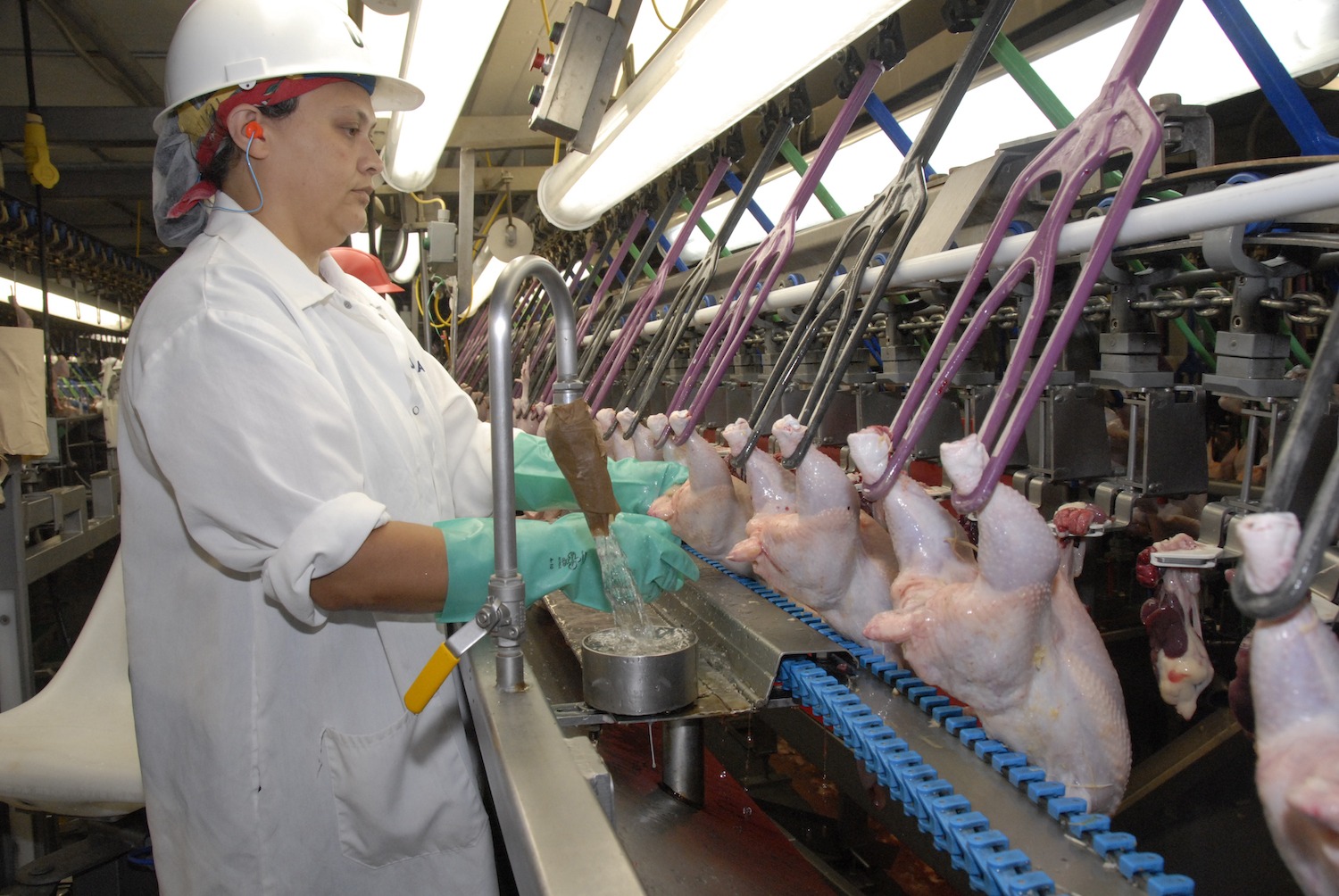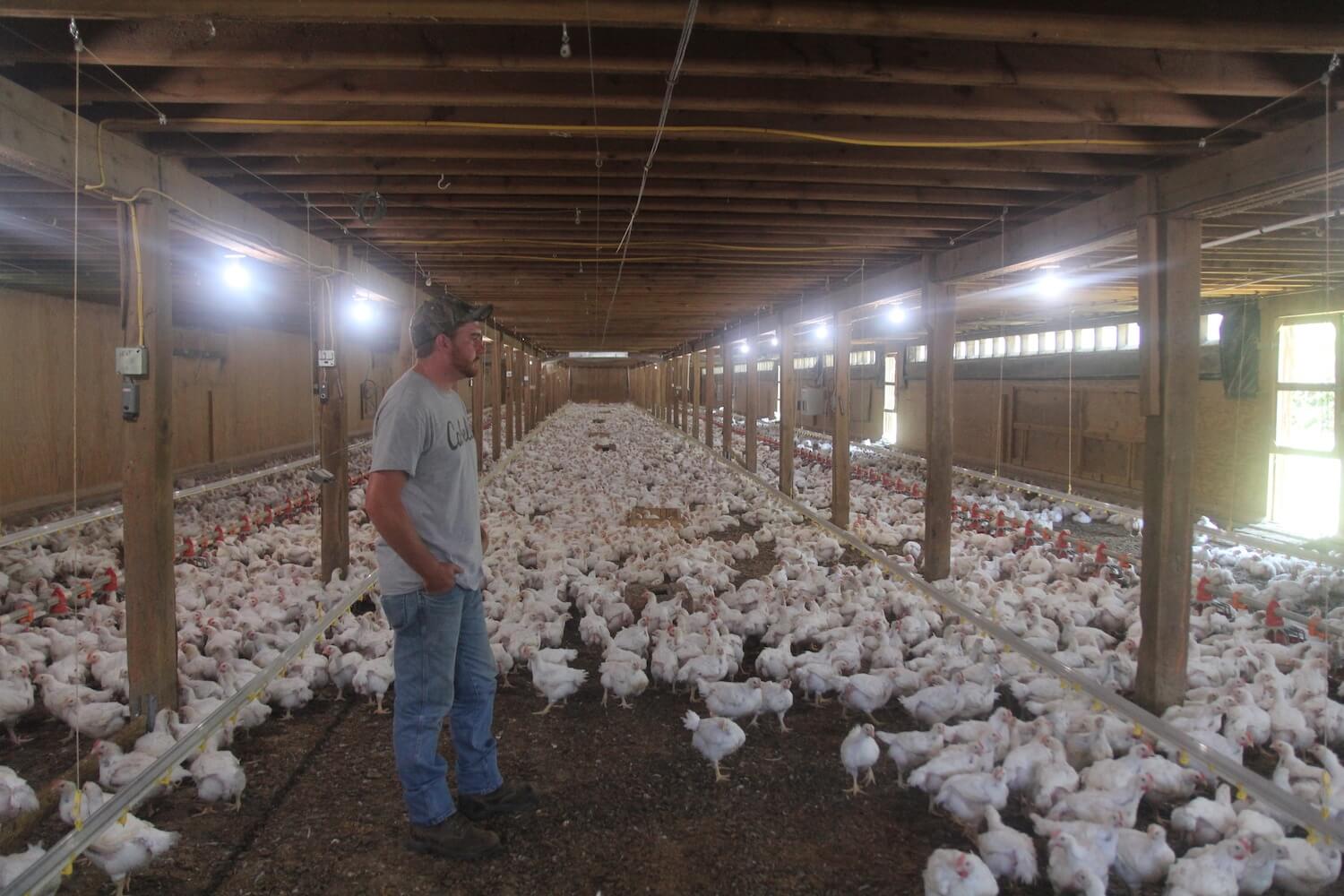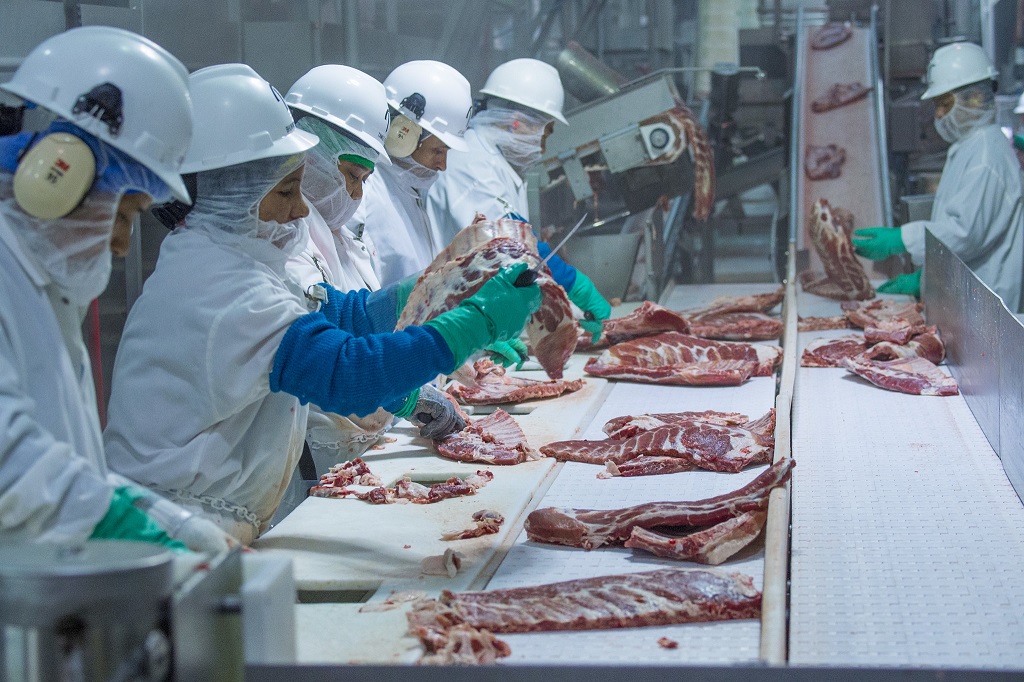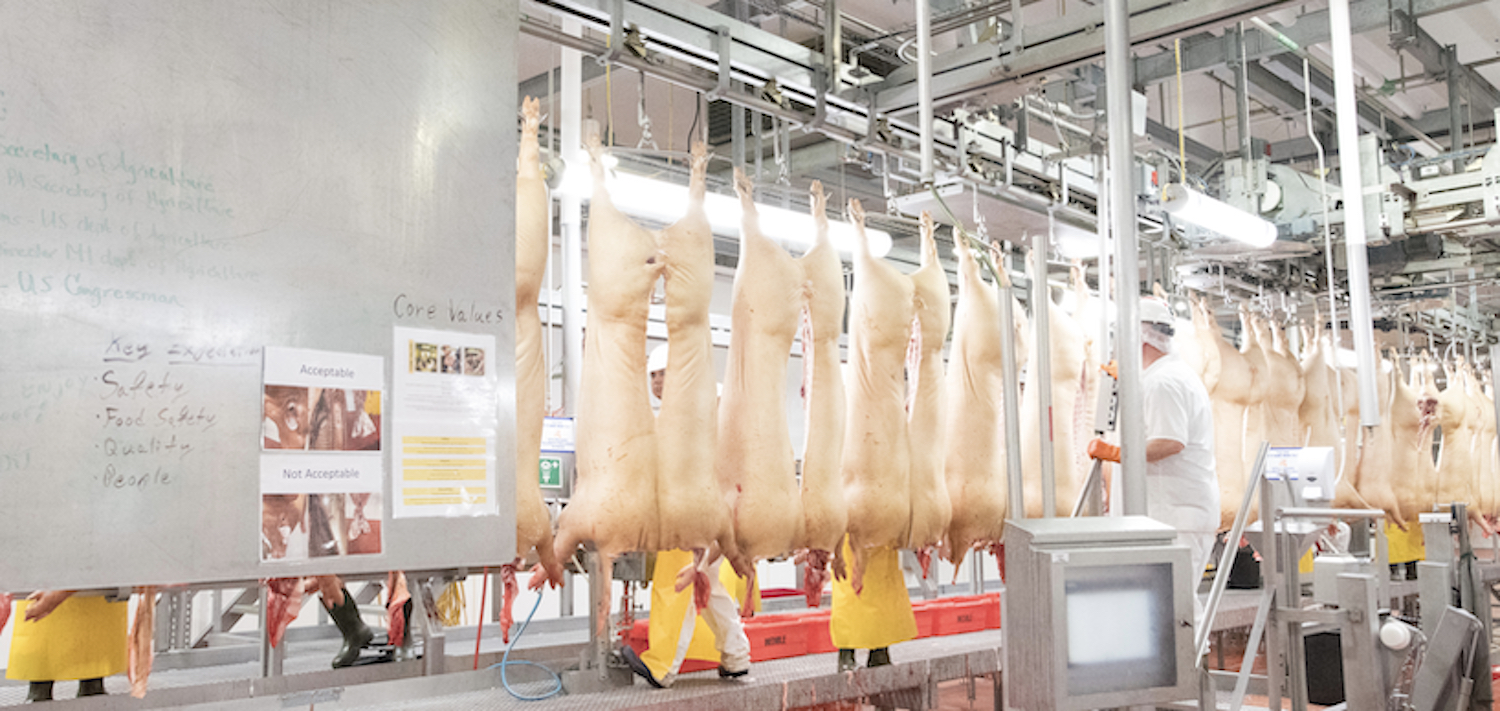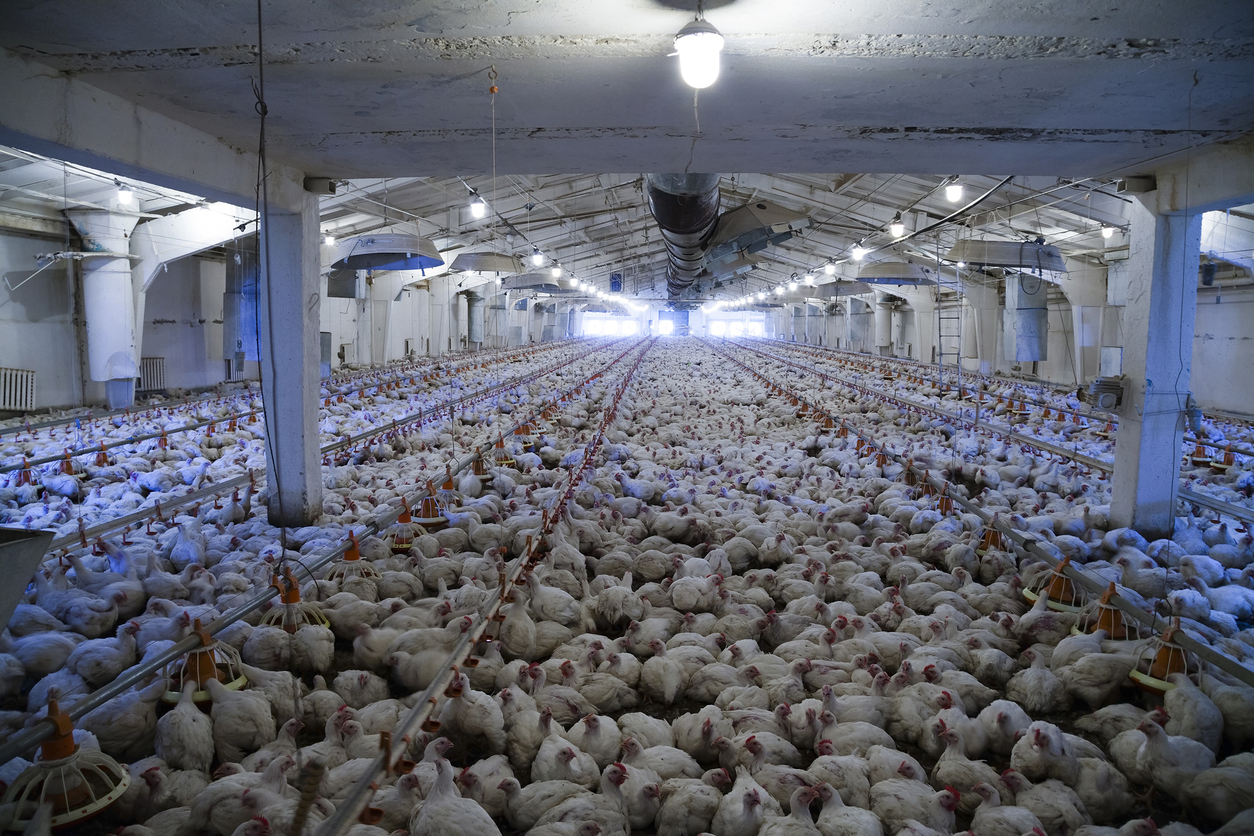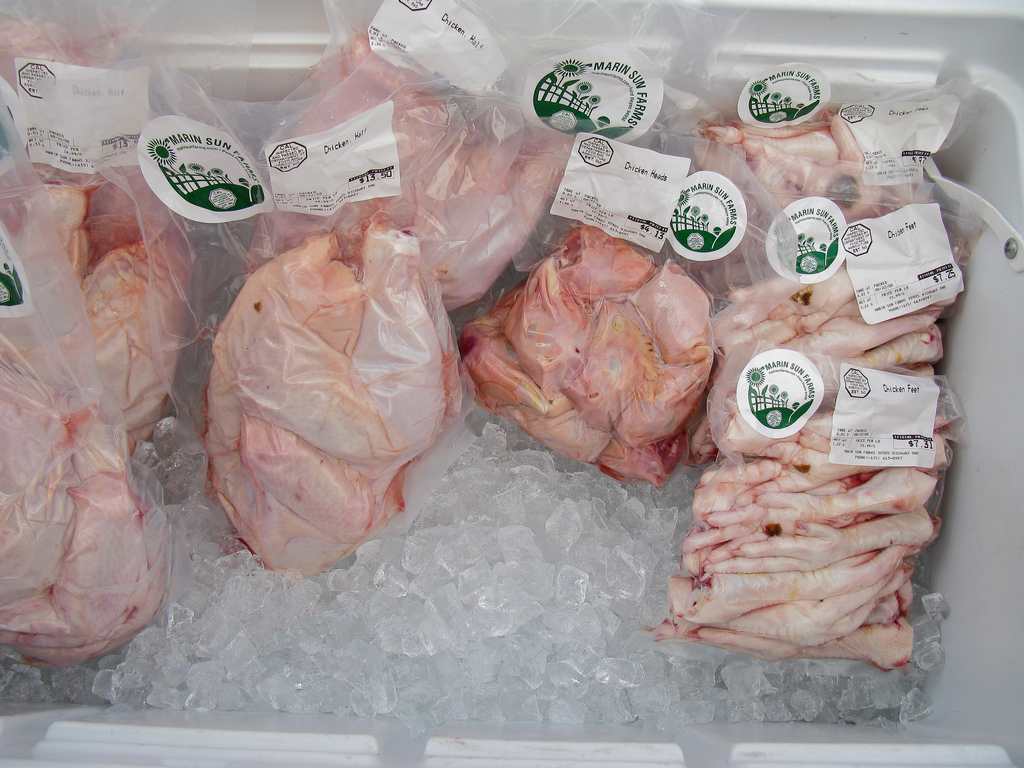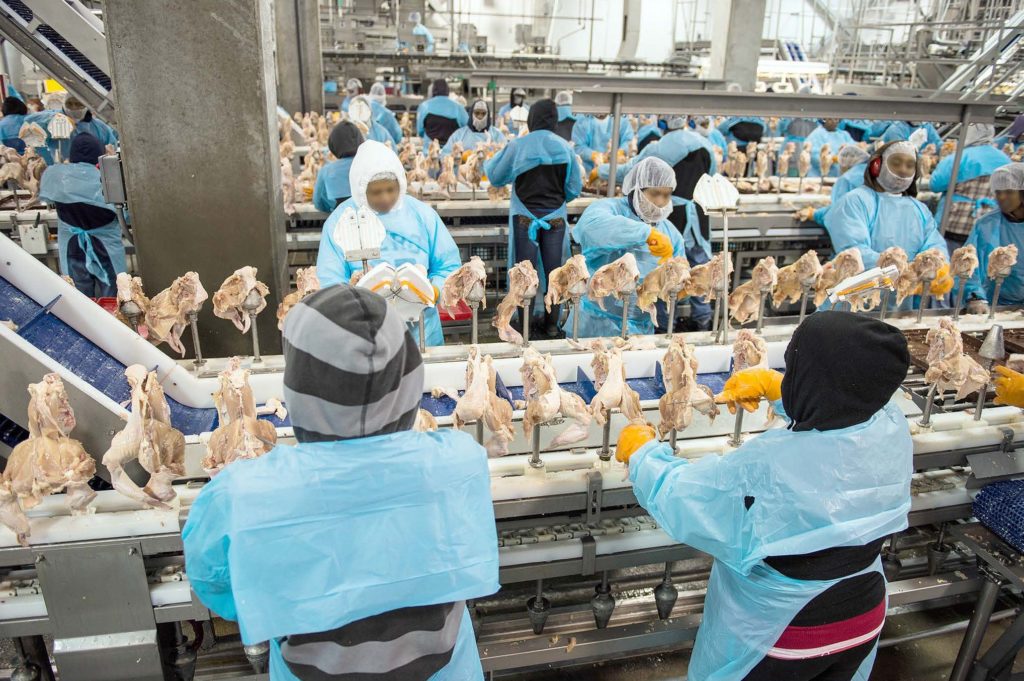Advocates worry that faster line speeds will jeopardize worker and food safety.
The Department of Agriculture (USDA) gave a Washington State poultry plant permission to significantly increase its processing speeds—a move some fear may jeopardize worker and food safety.
Foster Farms, the biggest chicken processor on the West Coast, was granted a line speed waiver by USDA’s Food Safety and Inspection Service (FSIS) on Tuesday for its 100,000-square feet operation in Kelso, Washington. This will allow the facility to slaughter chickens at a rate of 175 birds per minute—equivalent to 3 birds a second—up from the industry standard of 140 birds per minute. With this approval, the first of 2020, the Foster Farms plant joins 38 other facilities authorized to operate at the higher speed.
Higher line speeds have been a long-sought goal of the poultry industry, which argues that faster processing is needed to stay competitive on a global scale. In 2017, the National Chicken Council lobbied USDA to do away with speed limits entirely, calling them “arbitrary” and costly—a petition that drew heavy opposition and was eventually denied.
“With an increased line speed, there’s going to be a less likely chance to catch any pathology that shouldn’t be going out to the consumers.”
Higher speeds have been vigorously denounced by unions representing both slaughterhouse employees and federal food safety inspectors, who warn that faster processing could lead to higher rates of worker injury and make it harder to spot defects on chicken.
“With an increased line speed, there’s going to be a less likely chance to catch any pathology that shouldn’t be going out to the consumers,” said Paula Schelling, acting national joint council chairman of an FSIS inspectors’ union.
Federal inspectors play a critical role in monitoring the safety of the U.S. meat supply. Under traditional rules, every meat processing line requires the visual oversight of four USDA employees, who are responsible for visually checking every carcass for issues ranging from symptoms of disease to fecal matter.
Workers fear that higher speeds raise their risk of being injured on the job.
In 2014, USDA launched a program called the New Poultry Inspection Service (NPIS), which reduced the number of inspectors per line from four to one, while instituting a more frequent spot-checking system. Officials touted NPIS as a win-win: One that lowered demand for its limited pool of inspectors, while maintaining the rigor of their oversight. At the time, it considered but ultimately rejected allowing NPIS facilities to also operate at the higher, 175 birds per minute speed.
Then, in 2018, USDA reversed course: It announced that facilities participating in NPIS would, in fact, be permitted to run at the 175 birds per minute rate, provided they regularly test and share pathogen data with the agency. The agency argued that this would incentivize slaughterhouses to share information crucial to public health. Processors, such as Foster Farms, that demonstrate to USDA that they meet all criteria can now receive a line speed waiver which permits them to run faster and put out more products.
Workers fear that higher speeds raise their risk of being injured on the job.
“For the USDA to grant waivers one-by-one to allow them to engage in this hazardous practice is a risky mistake.”
“Faster line speeds in the poultry plants are dangerous for workers,” said a spokesperson for the United Food and Commercial Workers, a union that represents 250,000 workers in the food processing and meatpacking industry. “Line speeds in poultry plants can already move at an insanely fast 140 birds per minute …. For the USDA to grant waivers one-by-one to allow them to engage in this hazardous practice is a risky mistake.”
According to interviews conducted by the Government Accountability Office (GAO), a federal watchdog agency, poultry inspectors reported experiencing high rates of repetitive motion injuries due to fast line speeds. Meanwhile, slaughterhouse workers reported that employers were often reluctant to slow speeds down, even in the event of understaffing.
One environmental advocacy group is calling for USDA to revoke all line speed waivers. It’s also calling on the agency to increase transparency in the review process by soliciting public comment for future requests, believing that doing so would give inspectors and workers a chance to express their own labor and food safety concerns.
“We’re not confident that the agency is really looking out in the best interest of consumers, of the inspectors that they employ, and of the plant workers.”
“We’re not confident that the agency is really looking out in the best interest of consumers, of the inspectors that they employ, and of the plant workers,” said Tony Corbo, senior government affairs representative of Food & Water Watch.
Meanwhile, USDA defended its move, asserting that its practices “ensure that American families have safe and wholesome food on the table.” It also referred to the Covid-19 pandemic, pointing to FSIS’s role at the “forefront” of “ensuring the safety of the nation’s commercial supply of meat, poultry and processed egg products.”
Demand for meat has spiked in the past few weeks, as panicked shoppers have temporarily left some grocery shelves bare. In March, USDA also granted a line speed waiver to a Tyson beef processing plant in Holcomb, Kansas, and indicated that it will likely continue to issue more. Guess that’s one way to keep the meat flowing.
